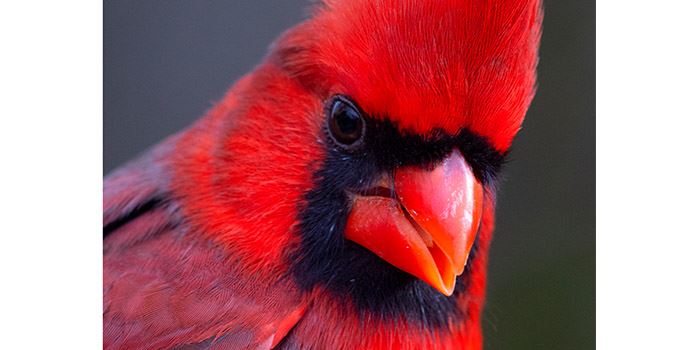The Winter Redbird

By Karen Menard
Sporting a rich coat of scarlet plumage, the Northern Cardinal’s flashy presence graces us year round in northwest Ohio. Although, a flicker of red against a snowy backdrop is always a bonus on a cold day.
Frequenting urban neighborhoods and feeding stations, as well as many habitats in the Metroparks, the males of this species can easily be noticed by their bright color as well as abundance and elegance of song (males can sing up to 24 tunes). Interestingly, though, the female isn’t lacking in beauty or song, as she flaunts camouflaged, earthy tones of browns and reds, and is capable of a few songs-mostly sung from the nest.
Northern Cardinals supplement their diet with insects, but mostly prefer to eat seeds and berries in which can easily be cracked with their large, strong conical bills. Offering sunflower and safflower seeds will aid in attracting these birds to feeders. During the winter months, they can easily be seen moving around areas in flocks looking for food.
Planting native, fruit bearing shrubs on the landscape will not only support their overall health, but will also enhance the color of their plumage. Red or orange pigments found in colorful shrubs such as serviceberry, winterberry, flowering dogwood, mulberry, and some species of viburnums are responsible for the red feather coloration in male cardinals. Their bodies cannot manufacture the carotenoid pigment on their own. Ingesting berries containing these special pigments from shrubs made available in gardens and parks will aid in enhancing their beautiful red coloration for us to enjoy all year round.
Did You Know? The cardinal is the official state bird of 7 states: Indiana, Ohio, Kentucky, North Carolina, West Virginia, Virginia and Illinois